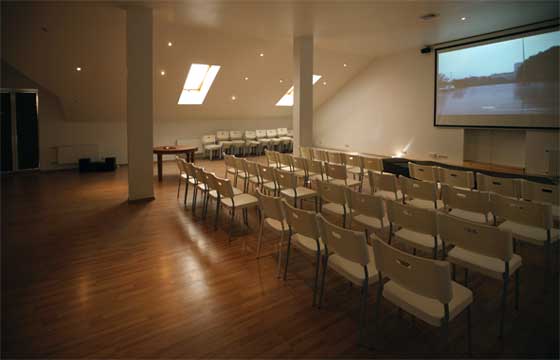|
|
| Yet more hedgehogs in the fog Jānis Borgs, Art Critic Exhibition A Thing Spins a Leaf by the Wind by a group of artists (Liudvikas Buklys, Gintaras Didžiapetris, Antanas Gerlikas, Elena Narbutaitė, Nicolas Matranga) 07.08.–29.08.2010. “kim?” | |
| hm,..................................................... khee.................................................................. x......... xxx.......... yyy......................................... й.................... wwwwwwwwwwwwwwwwwwwwwwwww ,,,,,,,,,,,,,,,,,,,,,,,,,,,,,,,,,,,,,,,,,, ,,,,,,,,,,,,,,,,,, \\\\\\\\\\\\\\\\\\\\\\\\\ ...................................................................... sssssssss +++++++++++++++++++++ udsudsudsudsudsudsuds .... uuuu .... dddd .... ss ................................................. ,,,,,,,,,,,,,,,,,,,,,,,,,,,,,,,,,,,,,,,,,, ??????? .... ................................................... ///////////////////////////////////////////// ??????????????????????????????? ...................... ssssssssssssssssssссссссссиииииииииииииииииии mjaaaaaaaaaaaaaaaaaaaaaaaaaaaммммммм ----------------- ==== =============== ------------------ ============= AFRICA ////////// ///////////// ADDDISSSSS ABBBBBABBBBBA AAAAAAAAAA. BAAAAANNNNNNNNN ZZZZZZZZZZZZZZZZZZZZZZZ AAAAAAA AAAAAAAAA IIIIIIIIIII This is roughly what a ‘conceptual’ review about the exhibition of young Lithuanian conceptualist artists at the art centre kim? could look like, if the author did not want to lay claim to a fee from the editors of this magazine. That’s why I will continue expressing my views in a conceptually more coherent form. When, prior to World War I, Kazimir Malevich created his black square on a white background, the world of art reeled from the monumentality of his conceptual minimalism. But last year, when little Kaziks Mālmanis created the very same square and tried to enrol in art school, he was told to go jump… When, in 1978, Alexei Lubimov presented John Cage’s non-musical concept in Riga, his piece of silence called 4’33 (where he was replicating the concepts of four predecessors, the oldest of which dates back to 1897), substantiating his choice with Zen Buddhist motivation, then the public of Riga pricked their ears in wonder at the filigree nuance and diversity of this silence. But when I was listening to the same concept in a jammed lift… (I won’t say what I was thinking.) When, in 1973, I attended my first conceptualist exhibition in Warsaw’s Foksal gallery and spent one whole hour on my own being immersed in the experience (small texts projected on the walls of an empty room), the gallerists started wondering about this ‘crowd’ of visitors that had gathered in my person. And instantly I gained the status of apologist of conceptualism for the entire Baltic region. But after almost 40 years without a break of watching one generation of young artists after another ecstatically repeating the same marginal exercises in the zero zone, with an infantile, naive attitude of superiority and uniqueness, there awakens in me a retrograde ‘criticist’ and a wish to have a ‘bite’ of something conceptually more substantial, something like Karl Marx’s Capital, or Schicklgruber’s Mein Kampf. | |
 Antanas Gerlikas. Following the Track of a Different Smell. Video. 2010. Photo: Martins Vizbulis | |
| The press release for the exhibition A Thing Spins a Leaf by the Wind is like a failed fledgling lawyer who piteously tries to explain the immense and ‘deep’ significance of the high-pitched humming sound of a gnat ‘artefact’, barely noticeable in the empty room. Even Marcel Proust and Odilon Redon are invoked (ah, if they knew what insignificance is being covered up by their names!). It is an attempt to cast a shamanic spell on the viewer using the authority of allegedly well-known artists, ‘international experience’, academic education – which we will not try to argue about. Because it’s not only in Lithuania that sectors of the avant-garde and art professionals suffer from cerebral anaemia. It thrives even more readily in Latvia, and, in a wider perspective, it is becoming a global problem. Like shaky masturbation in place of a healthy reproductive instinct and libido. What is observed at the exhibition, or rather barely seen, gives rise to one positive effect – a stirring dose of adrenalin, and stimulates thoughts about the crisis and impotence of Western civilization. To which, some time ago, the newspaper Pravda in our ‘near abroad’ also reacted anxiously with articles under the headline Kak dolgo budem terpetj, tovarisci? (‘How long are we going to put up with this, comrades?’). Then came the prosecutor. Now we have a “bin laden” following our nerdy thinking and laxity of thought. “Do you know what a twerp is? When I attended Shortridge High School in Indianapolis 65 years ago, a twerp was a person who inserts a set of false teeth between the cheeks of his ass in order to bite the buttons off the backseats of taxicabs. (And a snarf was a person who went around sniffing girls’ bicycle saddles.)” (Kurt Vonnegut) P.S. All of the above does not diminish the respect and the scientific interest of the Old Angry One towards the young, maybe not so Angry Ones, from the aspect of cultural history and in all conceptual vibrations. /Translator into English: Vita Limanoviča/ | |
| go back | |







